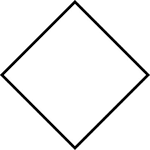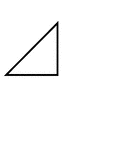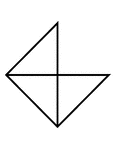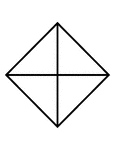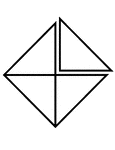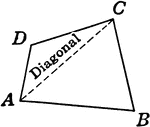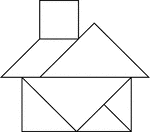
Medium House
Tangrams, invented by the Chinese, are used to develop geometric thinking and spatial sense. Seven figures…
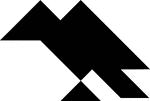
Mocking Bird
Tangrams, invented by the Chinese, are used to develop geometric thinking and spatial sense. Seven figures…
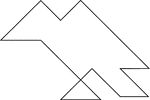
Mocking Bird
Tangrams, invented by the Chinese, are used to develop geometric thinking and spatial sense. Seven figures…
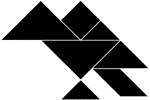
Mocking Bird
Tangrams, invented by the Chinese, are used to develop geometric thinking and spatial sense. Seven figures…
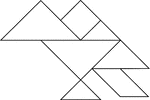
Mocking Bird
Tangrams, invented by the Chinese, are used to develop geometric thinking and spatial sense. Seven figures…

Mountain
Tangrams, invented by the Chinese, are used to develop geometric thinking and spatial sense. Seven figures…

Mountain
Tangrams, invented by the Chinese, are used to develop geometric thinking and spatial sense. Seven figures…

Mountain
Tangrams, invented by the Chinese, are used to develop geometric thinking and spatial sense. Seven figures…

Mountain
Tangrams, invented by the Chinese, are used to develop geometric thinking and spatial sense. Seven figures…
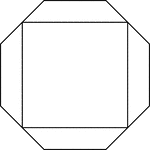
Octagon Circumscribed About a Square
Illustration of a regular octagon circumscribed about a square. This could also be described as a square…

Palm Tree
Tangrams, invented by the Chinese, are used to develop geometric thinking and spatial sense. Seven figures…

Palm Tree
Tangrams, invented by the Chinese, are used to develop geometric thinking and spatial sense. Seven figures…

Palm Tree
Tangrams, invented by the Chinese, are used to develop geometric thinking and spatial sense. Seven figures…

Palm Tree
Tangrams, invented by the Chinese, are used to develop geometric thinking and spatial sense. Seven figures…

Parallelogram
Tangrams, invented by the Chinese, are used to develop geometric thinking and spatial sense. Seven figures…

Parallelogram
Tangrams, invented by the Chinese, are used to develop geometric thinking and spatial sense. Seven figures…

Parallelogram
Tangrams, invented by the Chinese, are used to develop geometric thinking and spatial sense. Seven figures…

Parallelogram
Tangrams, invented by the Chinese, are used to develop geometric thinking and spatial sense. Seven figures…

Altitude and Diagonal of a Parallelogram
Illustration of a parallelogram with altitude and diagonal drawn.
Parallelogram Used to Construct Equivalent Square
Illustration of a how to construct a square equivalent to a given parallelogram.

Parallelogram With Diagonals Bisecting Each Other
Illustration of a parallelogram with diagonals drawn to show they bisect each other.

Parallelogram With Lines From opposite Vertices to Midpoints
Illustration to show that when lines from two opposite vertices of a parallelogram to the midpoints…
2 Equal Parallelograms
Illustration used to prove the theorem "Two parallelograms are equal if two sides and the included angle…
Equal Parallelograms
Illustration of a two equal parallelograms. Two parallelograms are equal, if two sides and the included…
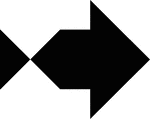
Parrot Fish
Tangrams, invented by the Chinese, are used to develop geometric thinking and spatial sense. Seven figures…
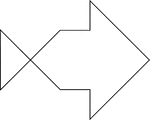
Parrot Fish
Tangrams, invented by the Chinese, are used to develop geometric thinking and spatial sense. Seven figures…
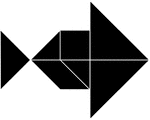
Parrot Fish
Tangrams, invented by the Chinese, are used to develop geometric thinking and spatial sense. Seven figures…

Parrot Fish
Tangrams, invented by the Chinese, are used to develop geometric thinking and spatial sense. Seven figures…
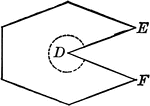
Concave Polygon
Illustration of a concave polygon. A concave polygon is a polygon of which tow or more sides, if produced,…
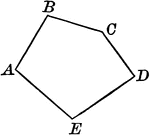
Convex Polygon
Illustration of a convex polygon. A polygon is convex when no side when produced will enter the polygon.
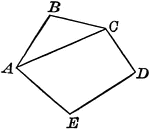
Polygon With Diagonal
Illustration of a polygon with a diagonal drawn. A diagonal of a polygon is a line joining the vertices…

Equiangular Polygons
Illustration of a two polygons. Polygons may be mutually equiangular without being mutually equilateral.

Equilateral Polygons
Illustration of two polygons. Polygons may be mutually equilateral without being mutually equiangular…

Right Rectangular Prism
Illustration of a right rectangular prism with the height greater than the length and width. The bases…
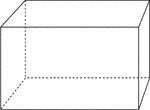
Right Rectangular Prism
Illustration of a right rectangular prism. The bases are congruent rectangles and the opposite faces…
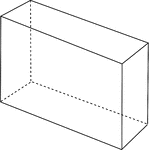
Right Rectangular Prism
Illustration of a right rectangular prism that is viewed at an angle. The bases are congruent rectangles…

Right Rectangular Prism
Illustration of a right rectangular prism that is viewed at an angle. The bases are congruent rectangles…
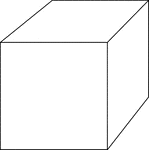
Right Rectangular Prism
Illustration of a right rectangular prism. The bases are congruent rectangles and the opposite faces…

Right Rectangular Prism
Illustration of a right rectangular prism with the height greater than the length and width. The bases…
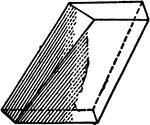
Prismatoid With Quadrilateral Faces
An illustration of a prismatoid with faces that are quadrilaterals.

2 Rectangular Prisms
Illustration of 2 right rectangular prisms. The bases are congruent, but the height of the smaller prism…

2 Rectangular Prisms
Illustration of 2 right rectangular prisms. The bases are congruent, but the height of the smaller prism…
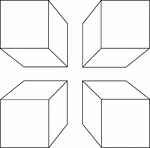
4 Congruent Rectangular Prisms
Illustration of 4 congruent rectangular prisms placed in the shape of a square. They are arranged to…
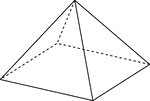
Rectangular Pyramid
Illustration of a right rectangular pyramid with hidden edges shown. The base is a rectangle and the…

Rectangular Pyramid
Illustration of a right rectangular pyramid with hidden edges shown. The base is a rectangle and the…
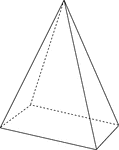
Rectangular Pyramid
Illustration of a right rectangular pyramid with hidden edges shown. The base is a rectangle and the…
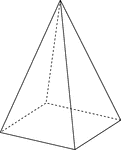
Rectangular Pyramid
Illustration of a right rectangular pyramid with hidden edges shown. The base is a rectangle and the…

Skewed Rectangular Pyramid
Illustration of a non-right, or skewed, rectangular pyramid with hidden edges shown. The base is a rectangle…



